IN GOWANUS, AMONGST COCAINE FIENDS (1914)
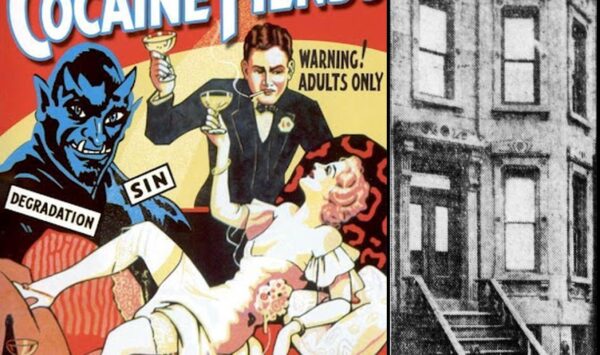
******************************************************************************************************************************** Brownstone Detectives investigates the history of our clients’ homes. The story you are about to read was composed from research conducted in the course of one of those investigations. Do you know the history of YOUR house? ******************************************************************************************************************************** Cocaine abuse truly became a “thing” in the United States starting in the early 20th century. Although it existed here earlier than that, it wasn’t until the early 1900s that states began to prick up their ears to the threat and counter its effects on society. In 1910, President William Taft declared the white powder “Public Enemy No. 1,” and in 1914, where our story begins, Congress passed the Harrison act, which tightly regulated the distribution and sale of cocaine. That year, an unassuming brownstone in the less-than-glitzy Gowanus neighborhood in Brooklyn became the target, first, of wealthy cocaine users and then, second, the police. SAY WEALTHY FOLK GOT COCAINE HERE “Detectives Asip and Dowd, of the Bergen street station, made a raid at the two-story and basement brownstone house at 666 Degraw street late yesterday afternoon,” noted the Brooklyn Daily Eagle, “and arrested a man and a woman for selling and dealing in cocaine, heroin and opium. “The attention of the police had been called to the place by some neighbors. The frequent presence of automobiles, carriages and other vehicular equipment of well-to-do persons at the front door aroused suspicion. “Detectives Asip and Dowd got a tip which led them to believe that the occupants of the house were dealing […]
RESCUE OPERATION ON “BOERUM HILL” (1964)
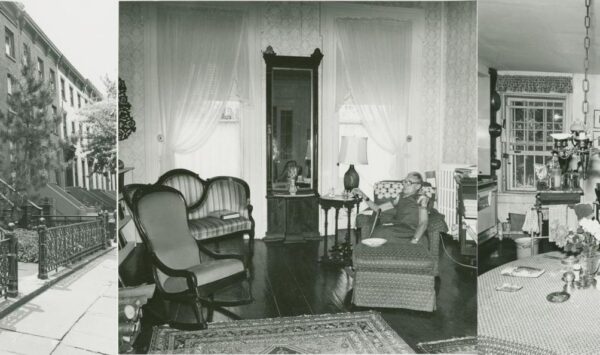
******************************************************************************************************************************** Brownstone Detectives investigates the history of our clients’ homes. The story you are about to read was composed from research conducted in the course of one of those investigations. Do you know the history of YOUR house? ******************************************************************************************************************************** Most Boerum Hill residents do not know the name Helen Buckler – but they should. While she wasn’t instrumental in building Boerum Hill, she was the reason it got its name. She also started the organization that ushered in the wave of brownstoners and brownstoning in the area, the Boerum Hill Association. Brownstoning – or the renovation of brownstones back to their former glory – is not a recent trend. Like many other movements, brownstoning appeared in parts of New York City in waves as good/bad economic times ebbed and flowed, neighborhoods fell in and out of fashion, and young professionals, who were usually the harbingers of those waves, “discovered” New York City’s 19th century brownstones. One of those waves washed over Brooklyn in the early 1960s. Helen Buckler rode, from her Dean Street brownstone, firmly atop the crest of that era’s wave. She named it Boerum Hill. BOERUM HILL BEGINS A few years after Buckler bought No. 238 Dean Street, she started the Boerum Hill Association. Then, already at the age of 70, she was no ordinary brownstoner. Her enthusiasm attracted to the organization approximately 20 like-minded families who were also interested in renovating their brownstones in the area. The purpose of the organization was to improve the community and […]
BODY-BUILDING IN THE GOWANUS (1911)
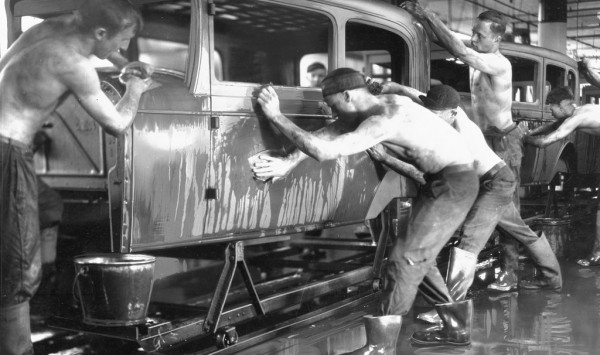
******************************************************************************************************************************** Brownstone Detectives investigates the history of our clients’ homes. The story you are about to read was composed from research conducted in the course of one of those investigations. Do you know the history of YOUR house? ******************************************************************************************************************************** Brooklyn’s Third Avenue was always just a bit gritty – even before the city decided it needed a motorway there to help ease congestion. That was when it started construction on the Gowanus Expressway in 1939. Traffic, though, had always been a large part of the avenue’s make-up. Even before the motorized vehicles, there were the horse-driven vehicles – cars, vans, streetcars, &c. But it was not just the vehicles that motored along the road that gave Third Avenue its rep – it was also those that parked alongside it – on lots, motor pools, parts yards, and other commercial properties. DONIGAN & NEILSON: BODY-BUILDERS One company that fit perfectly into its surroundings was Donigan & Neilson at 743-747 Third Avenue. This partnership’s firm catered to those commercial companies that operated using a variety of vehicles – to deliver, to haul, to move, &c. Donigan & Neilson built the bodies for those commercial vehicles – designing, building and assembling the bodies for hacks, trucks, vans, delivery wagons, and the like. This, of course, was before the assembly-line manufactured truck, when it made sense to have a commercial truck body made to order. According to their advertising, Donigan & Neilson began operations in 1875, when only horses propelled vehicles, and they were […]
THE PEDIGREE OF “BOERUM’S HILL” (1776)
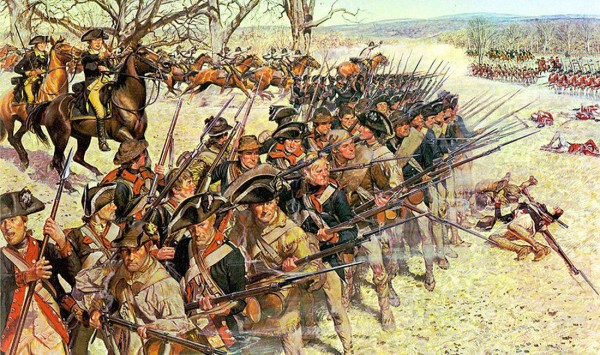
******************************************************************************************************************************** Brownstone Detectives investigates the history of our clients’ homes. The story you are about to read was composed from research conducted in the course of one of those investigations. Do you know the history of YOUR house? ******************************************************************************************************************************** What must it be like to have your identity co-opted for the purposes of obtaining personal credit? Though we cannot ask this question of Farmer Boerum – he’s been dead for more than 200 years – we can guess at what the old Dutch farmer would say. The name, Boerum Hill, which was commandeered from the colonial farm owned by the Boerum Family, in point of fact had its origination with an actual hill that existed on his farm – located in today’s Carroll Gardens/Gowanus – that was then locally known as “Boerum’s Hill” (then “Fort Boerum” during the Revolutionary War). Confused? Sure. Sooooooo…it’s a little like saying, “I named my dog ‘Spot’s Wart’ – after the wart on my dog, Spot.” OK. Well….maybe not exactly. But close. WHAT WAS BOERUM’S HILL? Boerum’s Hill, first and foremost was a natural topographical feature – an elevation or rise – on the Boerum Farm. We know little of its geographic specifications (height, width, slope, &c.) other than that. Located in today’s Gowanus/Carroll Gardens area, it was, additionally, a strategic military position known, during the Battle of Brooklyn, as Fort Box (and later, during the War of 1812, as Fort Fireman). So, we have a good indication, at least, that the hill was of […]
A BLACK PORTER ON WHITE 12TH ST (1901)
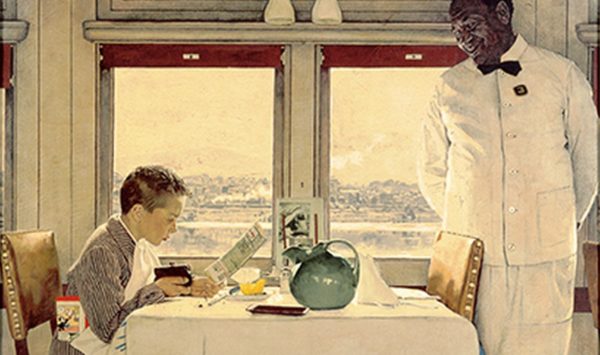
******************************************************************************************************************************** Brownstone Detectives investigates the history of our clients’ homes. The story you are about to read was composed from research conducted in the course of one of those investigations. Do you know the history of YOUR house? ******************************************************************************************************************************** Back in Victorian Brooklyn, segregated neighborhoods were the norm. The only blacks that most whites expected to see on their streets were those who worked there as maids or who participated in other working class trades. Blacks – commonly referred to then as “coloreds” or “Negroes” – rarely lived cheek-and-jowl with whites. On the rare occasion that a black family moved into a white neighborhood, an enormous amount of pressure was usually placed upon the family to move out immediately. It was for this reason that most neighborhoods remained segregated by the turn of the century. One such “Negro” family moved into the Gowanus section of Brooklyn in 1901, at No. 198 Twelfth Street, between Third and Fourth Avenues. It was not long before the family’s new white neighbors started to show their own colors as they began – very publicly in the newspapers – to register their extreme displeasure and disgust at the “intruders” on their block. This was a very highly charged story, to be sure, but was it factual? Or, was it generated to sell a house? The Brownstone Detectives investigated… WHOLE BLOCK EXCITED OVER ADVENT OF NEGROES… This story took place in the summer of 1901. Reported by the Brooklyn Daily Eagle, it seemed a sensationalist piece, […]
“MORALS OF MINNIE” ON GARFIELD PL. (1912)
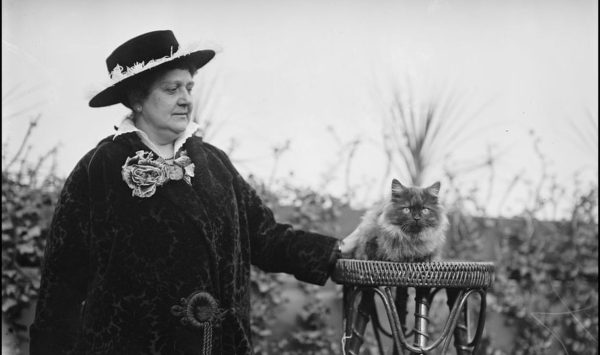
******************************************************************************************************************************** Brownstone Detectives investigates the history of our clients’ homes. The story you are about to read was composed from research conducted in the course of one of those investigations. Do you know the history of YOUR house? ******************************************************************************************************************************** In 1912, a Park Slope cat named Minnie found herself in some hot water. According to a complaint, Minnie’s claws had allegedly performed some serious mutilation to a neighbor’s roof. Here, now, are the details of: THE CURIOUS CASE OF THE CAT THAT CLAWED Location – Garfield Place (between 6th and 7th avenues). Suspect’s address – No. 182 Garfield Place, the Inasmuch Home for Aged Women. Claimant’s address – No. 178 Garfield Place, home of one William Albert Robbins, attorney. Suspect – one “Minnie,” a white Persian, and allegedly “immoral,” cat. THE WANDERINGS OF THE “INASMUCH” Around 1909, the Inasmuch Home for Aged Women moved from its previous location on Bergen Street to its new home at No. 182 Garfield Place in Park Slope between 6th and 7th Avenues. The Inasmuch (sometimes referred to as the “In-As-Much” by sloppy journalists) was a “charity” home for “aged women who are unable to get into other homes,” run through contributions and donations. It was founded in 1905, a few years before the move to Garfield Place. At that time, it existed in the Gowanus at No. 390 Douglass Street, and later moved to (what would become) the Boerum Hill section at No. 226 Bergen Street. By 1920, when it was finally closed, the […]
THE RENTERS OF CARROLL GARDENS (2017)
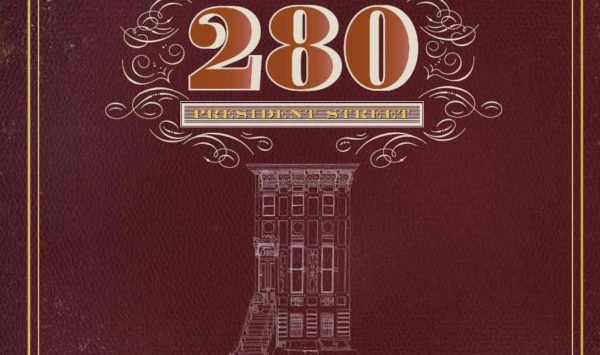
“A British cheese dealer, a newsman who predicted his own death, a leather merchant with a penchant for chorus girls, an alleged wife murderer, a German dentist with political aspirations, a Norwegian hero tugboat captain, and an Italian bomb builder…” These are many of the characters who were discovered during the recent investigation into the history of a Carroll Gardens brownstone. The historic property, No. 280 President Street, is an 1880 brownstone that was, additionally, built by a man who turned out to be the product of a clandestine relationship that rocked Brooklyn in the 1870s with stories of challenged wills, mental illness, and “other” women, presented under such headlines as “BEDEVILED” and “DRAKE’S WILL: His Illegitimate Children Most Carefully Provided for.” For nearly 100 years after the house was completed, No. 280 served its various owners as a rental property. The first owners to actually live in the home, Joachim and Eunice Auer, purchased it in 1979. After navigating redlining, remediating a rat and termite infestation, and entering into a year-long renovation, the Auers settled into enjoying their 2-story and basement home directly across the street from Carroll Park. While the Auers had always been interested in the history of their house (indeed, it was one of the reasons that they bought the house), and after doing some amount of research themselves, they decided to find someone who could more fully track down the history of their home. They turned to a detective – a Brownstone Detective. After a year […]
A STREETCAR JUMPS ON SACKETT STREET (1929)
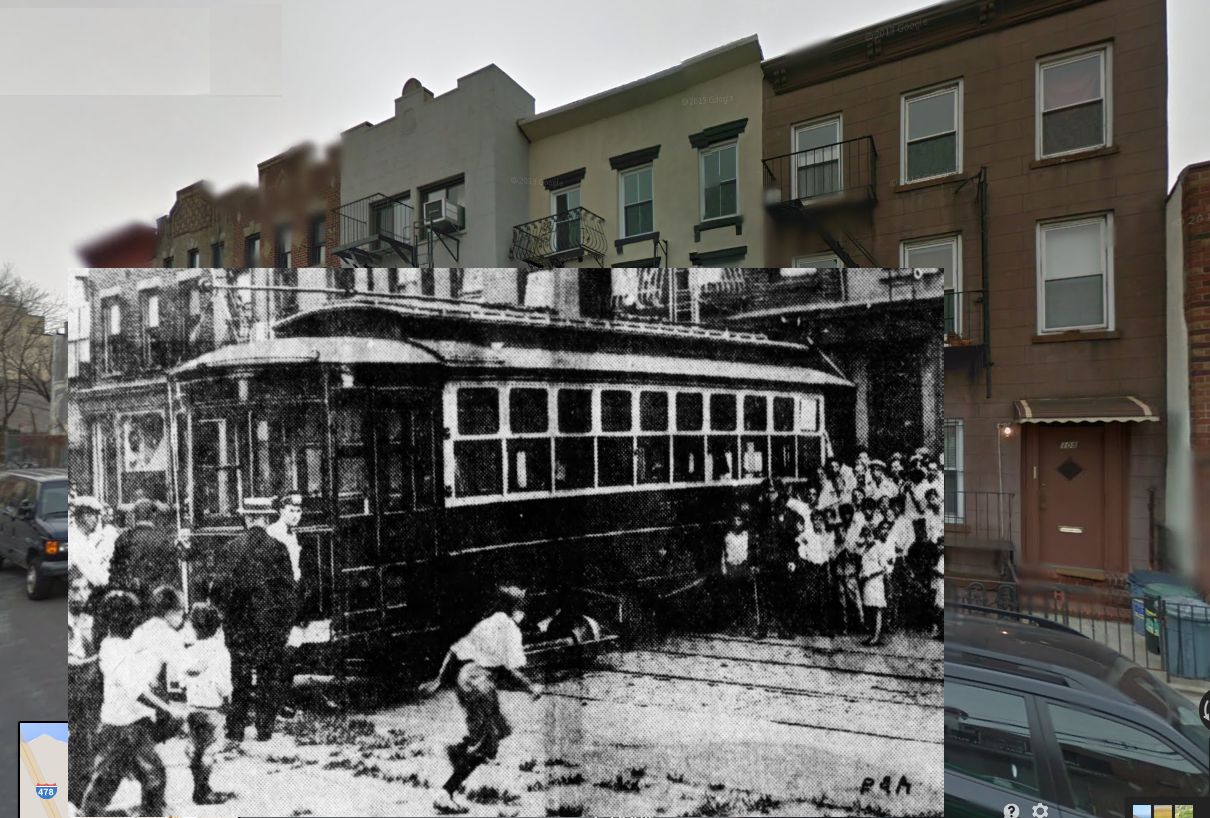
******************************************************************************************************************************** Brownstone Detectives investigates the history of our clients’ homes. The story you are about to read was composed from research conducted in the course of one of those investigations. Do you know the history of YOUR house? ******************************************************************************************************************************** If you bought a house that a streetcar had once crashed into – would you know about it? When researching the history of a client’s house, these are the stories that literally MAKE a House History Book. They are the stories that make the biggest splash – but in this case, a CRASH… But to the story… Back in the day, streetcars used to crash into buildings from time to time. The motormen’s reasons for this were usually that the car jumped the track while it was making a turn onto another street or avenue. In this instance, though, the motorman could only say that the streetcar “jumped,” but it does not appear that he was able to explain why – because he was operating the car in a straight line uphill on Sackett Street. While doing some research on a client’s home recently I saw this picture and I thought, “I didn’t even know that Sackett had a streetcar line!” Apparently, though, the line ran up and down the street back when it went both ways. The street must have been amazingly congested with these things going both ways! One day, in the Fall of 1929, though, that streetcar – starting on its run up the “slope” – literally “jumped” […]
SNOWBALLS TO BULLETS IN BROOKLYN (1888)
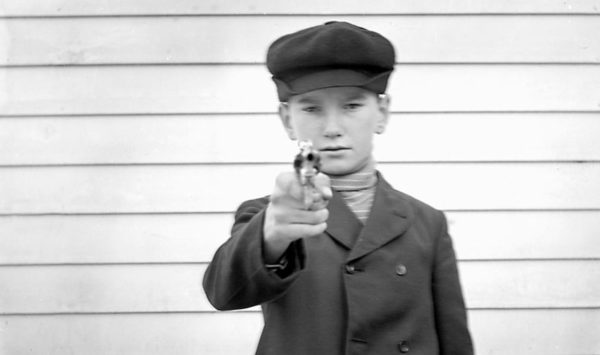
As the snow piled up during the Blizzard of 1888, Brooklynites began to experience countless fights. Snowball fights, that is. Most were lighthearted and fun, romps in the snow bringing joy and relief from the endless shoveling and the stress of everyday life with the white stuff. But sometimes these snowball fights turned ugly, exposing the more unsavory side of Brooklynites. They showed how quickly a snowball fight could evolve from a joyful game into mayhem-filled terror. Two cases, in particular, made the pages of the Brooklyn Daily Eagle during the week of the historic blizzard.Yesterday’s story involved a razor. Today’s involves a gun. THE GUN Seventeen-year-old James Fallon of Flatbush, Brooklyn, a “very quiet lad” who was working two jobs at the Hunter’s Point docks (as a plumbers’ apprentice and as a telegraph operator), fell in with a youth “of his own age,” one Joseph Woods, on the way to work two days after the Blizzard of ’88 struck. At the dock, the two boys noticed a “great pile of snow” – likely carted there by city contractors who were attempting to clear the streets. The two “for some time pelted each other with snowballs,” having great fun together. At one point, though, James managed to strike Joseph in the mouth with a snowball. This particular snowball “made him angry, whereupon he drew a revolver” and firing it at James, “struck him over the left eye.” James fell in the snow. Joseph ran away. THE TREK Most 17-year-old’s shot […]
IS THIS THE SITE OF A MASS GRAVE? (1905)
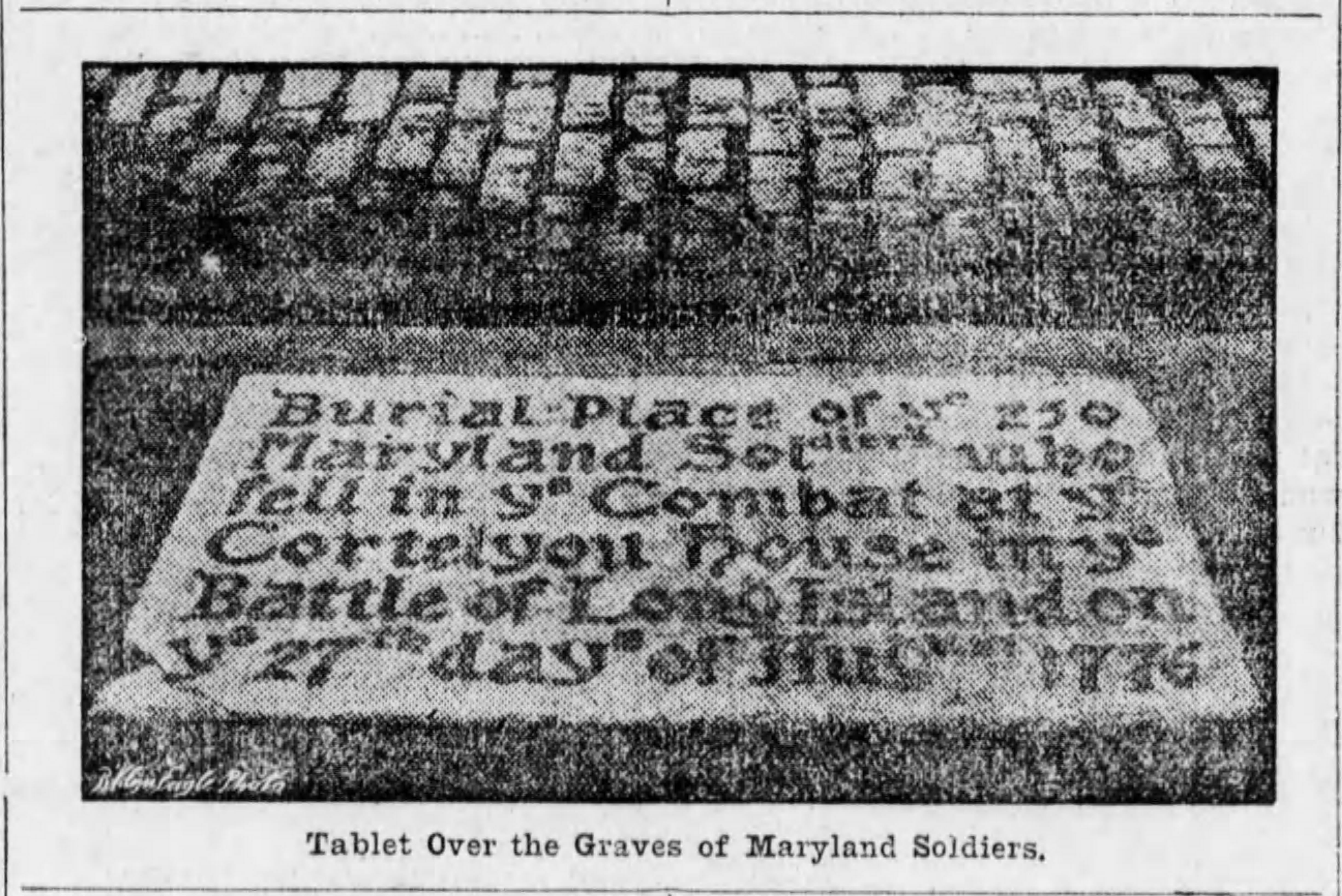
This year will mark the 241st anniversary of the day that, in 1776, our gallant soldiers of the 1st Maryland Regiment “fell in combat” in Gowanus, Brooklyn. Gen. George Washington was being routed by the British in the battle that might very well have ended our colonial bid for independence, were it not for these brave men, who held the British off while the rest of the American army could escape to fight another day. While Washington’s troops were spiriting away towards the East River, soon to escape in a fog so dense that the British did not know it was happening, the Maryland soldiers were dying and being captured at the hands of the representatives of our former enemy, the British Army. In the words of Walt Whitman, describing Washington as he watched the discomfiting scene through his telescope: Now of the old war-days . . the defeat at Brooklyn; Washington stands inside the lines . . he stands on the entrenched hills amid a crowd of officers, His face is cold and damp . . . . he cannot repress the weeping drops . . . . He lifts the glass perpetually to his eyes . . . . the color is blanched from his cheeks, He sees the slaughter of the southern braves confided to him by their parents. Ultimately,” according to the New York Times, “of the the original Maryland 400 muster, 96 returned, with only 35 fit for duty.” The mass grave, consisting of six […]